
Indoor air quality (IAQ) researchers have established that little bitty invisible pieces of stuff that float around in the air are bad for human health. Of course, being scientists, they don’t call it little bitty invisible pieces of stuff. They call it particulate matter (PM) or particulates.
And it turns out that the really small pieces — the stuff that’s 2.5 micrometers (0.0000025 m, or 2.5 µm) or smaller, abbreviated PM2.5 — is worse than the bigger stuff because it can penetrate deeper into the lungs and more easily find its way into your blood than the bigger particulates. The chart I included in my last article shows that PM2.5 is probably the worst indoor air pollutant overall.
And how do you deal with it? One of the primary methods is to filter it out of the indoor air. In most homes, the only place where filtering of the air occurs is in the heating and air conditioning system. But if you think you’re covered just because you have a forced-air HVAC system which has a filter, let me give you a few reasons why that filter — the filter that you so dutifully change — may not be helping your IAQ. (You do change your filter, don’t you?)
1. No filter
It’s true. If you don’t have a filter, you’re not gonna get much filtration. And yeah, it really happens. Sometimes someone removes the filter because it’s in a difficult spot to reach, like a crawlspace. Sometimes they take it out and forget to put it back in. Sometimes… well, who knows! All kinds of things happen. But if you don’t have a filter, not only are you not improving your indoor air quality, you’re also getting your ductwork, blower, air conditioner coil, furnace heat exchanger, and everything else in there dirty.
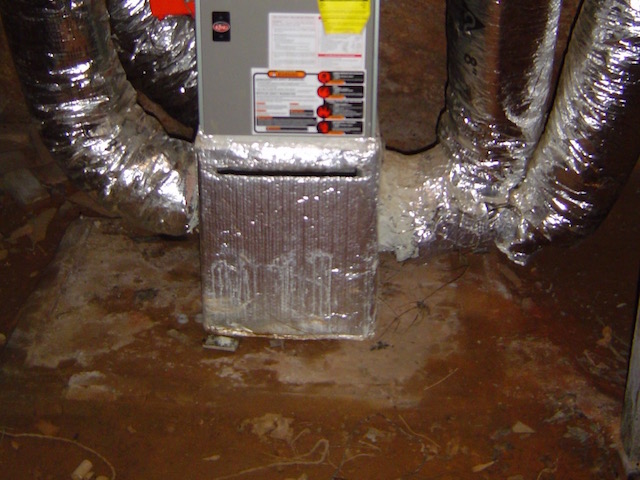
I took the photo above in a nasty, damp crawlspace in Atlanta. Notice that filter slot near the middle of the photo. Not only is the cover missing, but so was the filter. I took the picture on a hot, muggy day in August. Imagine all the nasty stuff getting sucked in there and sent into the house.
2. Filter bypass
Take a look at that photo at the top of this article. That’s some serious bypass. They put a nice, deep media filter in that’s capable of filtering out a lot of nasty stuff in the air. But they installed it incorrectly so quite a bit of air going through the system was passing right by — instead of through— the filter. A bypass means you’re not cleaning the air nearly as well as you should.
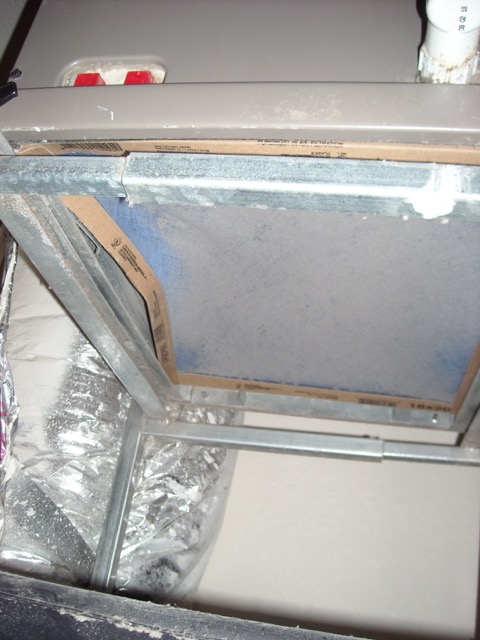
It doesn’t take a fancy filter to get bypass, though. Here’s one with a standard 1-inch fiberglass filter that was jammed into the slot incorrectly.
3. Not enough runtime
This one may blow your mind. Filters can clean the air only when there’s air going through them. When the system is off, no filtering happens. If you’ve been reading this blog for a while, you may be thinking, “Aha! Yet another reason not to install an oversized heating and air conditioning system.” The problem there is that when you put in a smaller HVAC system, you also cut down the air flow, and the filtration volume is the product of those two quantities:
Filtration volume = Air flow × Runtime
You can double the runtime by cutting the system size in half, but at the same time you’re cutting the air flow in half, so the filtration volume stays the same.
One way that some IAQ advocates tell people to get more runtime is to put the fan in the “On” position instead of in “Auto.” Weeeeeell, that’s a nice idea, and it will work in some places… at the cost of higher energy bills. But in a humid climate during cooling season, you could be making your indoor air quality worse by raising the humidity. I know. I measured it in my home a few years ago.
The best thing to do here is size your system properly, don’t put the fan in the “On” position, and get as much filtering as you can with your system. If you have an efficient blower motor and are in a dry climate or running your system with a dry coil, using the fan “On” setting can help. But the best thing to do is focus on minimizing the stuff in your indoor air that needs to be filtered to begin with by doing source control, air sealing, and mechanical ventilation, both local and whole-house. If that still doesn’t do it for you, it may be time to add a standalone fan with a filter that will run more and get you a higher filtration volume.
4. Not enough flow
Now you know flow and runtime go together. This other way to get low filtration volume is a common problem for a couple of reasons. First, many return ducts and filters are sized too small. That increases the pressure in the system, which reduces air flow. Second — and I know this doesn’t apply to you — some people don’t change their filters often enough. Again, the result is high pressure and low air flow.
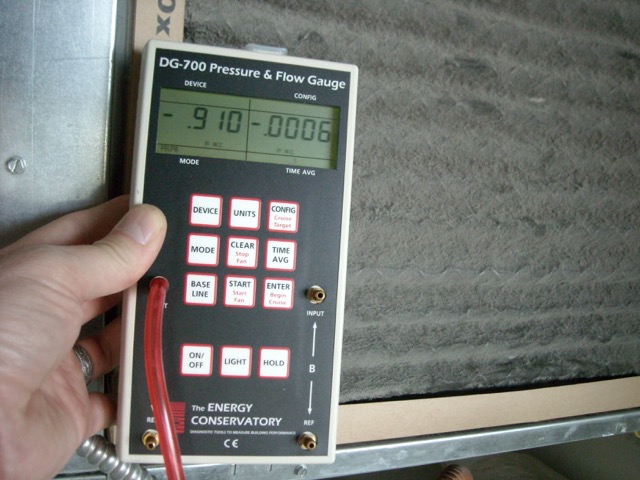
The system in the photo above had both problems. The pressure drop across the dirty filter and coil in this system was a super high 0.9 inches of water column (i.w.c.). With a clean filter, it was still a too-high 0.6 i.w.c. (Read more about this home.) That pressure drop is about ten times too high.
5. Low-efficiency (MERV) filter
You can install a standard 1-inch fiberglass filter. It’s not going to do much for your IAQ, though, because it’s basically designed to keep dog hair, dead spiders, and lost socks from getting into the air handler. The standard rating system for filters is Minimum Efficiency Reporting Value, or MERV. That 1-inch filter is about a MERV 2. The higher the number, the more stuff you filter out.
Here’s a chart I saw in a presentation at the North American Passive House Conference in Boston last month. It was put together by my friend John Semmelhack of Think Little in Virginia from data he found in various places.
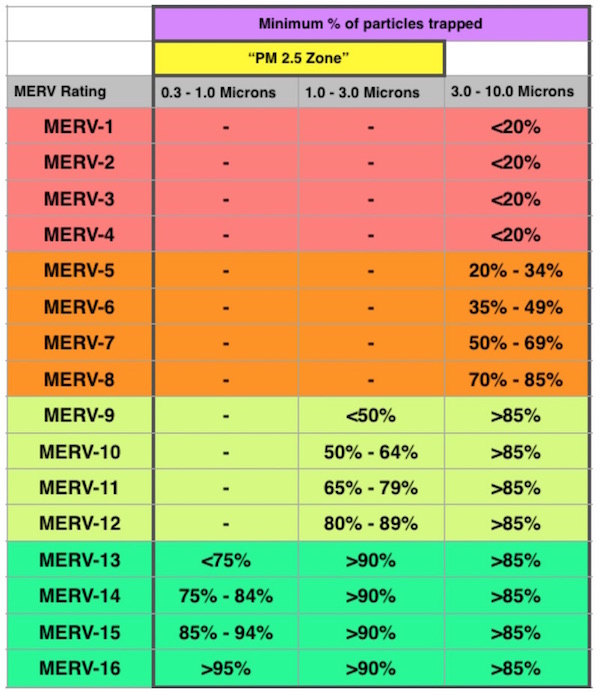
As you can see, you’ve got to step up your filter game to at least MERV-10 to get even half of the PM2.5. But you really need to be at MERV-13 because you want to remove more than 90% of those particular little bitty invisible pieces of stuff.
But there’s a caveat here: Many (most?) systems with high-MERV filters decrease the air flow because of poor design. My next three articles will explore this issue in depth and show you how to do it right.
6. Not filtering outdoor air for mechanical ventilation
Some ventilation systems are designed to use the heating and cooling ducts to distribute outdoor air, too. With the central-fan-integrated-supply type of mechanical ventilation, a duct from the outdoors is connected to the return side of the duct system. Occasionally, a designer or installer doesn’t pay attention and connects that outdoor air duct to the return side downstream of the filter.
Oops! When that happens, as it did below in this house with a filter grille, you’re putting unfiltered outdoor air straight into your ducts, where it can make the ducts, blower, and heating and AC components dirty as well as sending more particulate matter into your indoor air.
By the way, I haven’t said this yet, but the biggest source of PM2.5 in most homes is outdoor air. (If you smoke indoors or burn candles or incense regularly, those would be bigger.) So make sure you filter that outdoor air before introducing into your home.
7. Filter in the wrong place
I have to think this one is anomalous but with the strange stuff I’ve seen in the wild, who knows? The photo below was sent to me by my friend Jamie Clark in Kentucky. The air moves through that system vertically. There’s nothing coming in from the right side… over there where the filter is attached. So that filter does nothing because air doesn’t move through it.
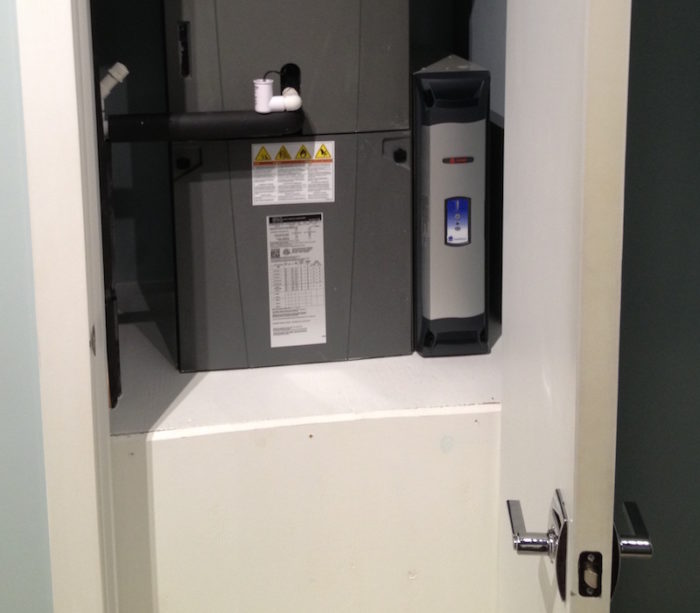
Filtration can be an important part of good indoor air quality. Unfortunately, there are some significant obstacles to overcome if you want it clean up your air. Professor Jeffrey Siegel has been studying the effectiveness of filtration in real homes and has found that the average home in their study has a filtration effectiveness of about 20%.
How’s your filter doing?
Allison Bailes of Decatur, Georgia, is a speaker, writer, building science consultant, and the author of the Energy Vanguard Blog. You can follow him on Twitter at @EnergyVanguard.
Weekly Newsletter
Get building science and energy efficiency advice, plus special offers, in your inbox.





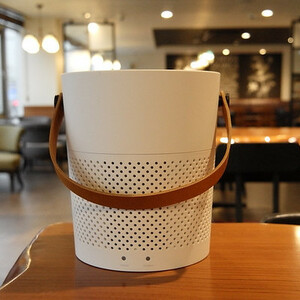
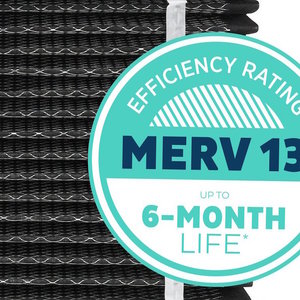

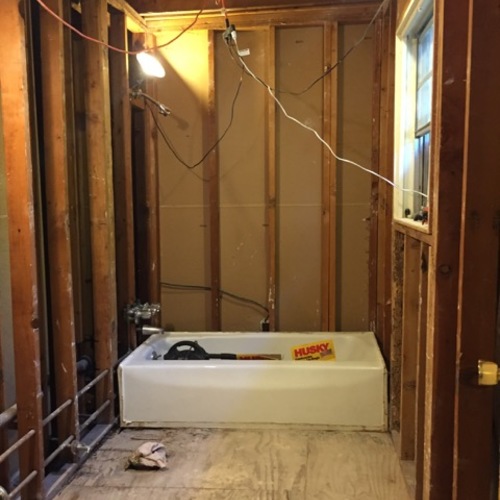






3 Comments
My forced air electric furnace uses a hammock filter. The furnace is old but still running fine. However, the hammock mechanism has seen better days and the filters are a serious pain to replace. Aside from inspiring a lot of cursing, it leaves bypass gaps and I haven't been able to find high quality filters in that format so I question how well it cleans the air even if it was possible to install it well.
I'd like to eliminate the hammock filter and install a box that will allow me to use the standard 16"*20" filters. Has anyone seen that retrofit done before?
Canada_Deck, my first suggestion is to replace the electric furnace with a heat pump. Unless you live in Miami, Florida or Harlingen, Texas or some other place with little heating load, it's costing you a lot of money. If your pen name here references where you live, you definitely should get rid of the electric furnace. Electric resistance heat may be 100% efficient at turning electricity into heat, but a heat pump would 200-300% efficient by the same measure.
Now, the hammock filter also should go. I'm sure you're correct about bypass and you're also limited on how much actual filtration you can do with that type of filter. I suggest installing either a filter cabinet at the return plenum or see if filter grilles can work for you. In either case, aim for a size of 1 square foot for each 200 cfm of air flow.
In my experience, the filter housing cover is often leaky, damaged, or removed completely. This product is a relatively inexpensive way to reduce the air bypass at the opening of the filter housing for some systems, although it will not work in all instances. http://www.filterlock.net
Allison, I'm looking forward to your next article and the issue of high MERV filters and the potential for reduced air flow.
Log in or create an account to post a comment.
Sign up Log in